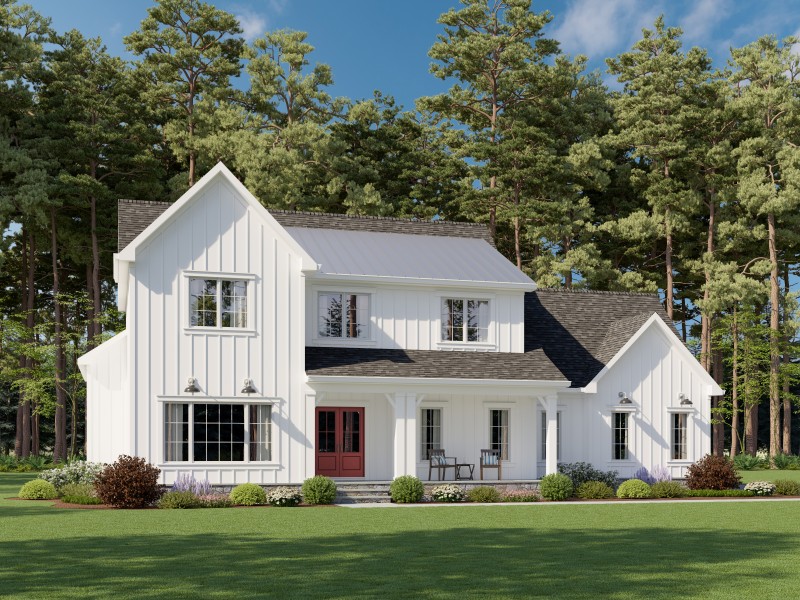Open Layout vs. Conventional Layouts: What Suits You?
Deciding between a modern layout and a traditional layout can be daunting when designing a new home construction. Both designs offer distinct advantages and appeal to various lifestyles, making it crucial to consider what suits you best. With the increasing popularity of modern living, open concept designs have become favored for their ample space and capability to create a seamless flow between rooms. On the flip side, traditional layouts offer defined spaces that can improve privacy and order.
As you start your journey of building a new home, it is vital to weigh the pros and cons of these layouts in the context of your requirements and wants. Whether you are drawn to the spacious atmosphere of an open floor plan or the timeless appeal of traditional rooms, understanding the implications of each design choice will help you create a home that truly reflects your lifestyle. In this article, we will examine the essential factors to think about when deciding between a modern layout and a traditional layout, alongside helpful suggestions to guide your new home construction.
Comprehending Layouts: Open-Plan vs. Classic
While selecting on the configuration of your new home, it's crucial to consider the benefits and drawbacks of open-plan versus traditional designs. Open concept homes highlight a free-flowing layout where the cooking area, recreation space, and dining room blend together. This style encourages socializing, making it ideal for family gatherings and entertaining guests. The removal of walls can also create an perception of more space, allowing for adaptability in furnishing layouts and decor.
In contrast, conventional layouts provide separated spaces that provide seclusion and separation between various areas of the residence. Rooms such as the cooking area, dining room, and living area are neatly set apart, which can foster a sense of warmth and arrangement. For families with particular requirements, such as workspaces or children's areas, this type of design can be advantageous, as it allows for dedicated spaces adapted to different activities.
Finally, the decision between open-plan and traditional layouts depends on individual taste and way of life. Reflect on how you and your family conduct yourselves, host, and use space daily. Both of these layouts offer unique advantages, so reflecting on your wants and how you imagine your new home will help you determine the right option for your upcoming build.
Constructing Schedule: How Long Does It Really Take?
The timeline for constructing a new home can vary significantly due to several factors, including the size of the house, the intricacy of the blueprint, and the efficiency of the construction team. Typically, the complete process can take anywhere between several months to over a year. On average, expect around six nine for a typical single-family house. This duration includes land preparation, the actual construction phase, and the final check-ups prior to moving in.
To get a more detailed breakdown, key phases such as obtaining permits and reviews typically take several weeks to a few months, depending on local regulations. Once construction starts, the framework, electrical, pipework, and final touches each take a specific amount of time. Moreover, delays can occur due to weather conditions or supply chain issues, which are more and more common in the current construction landscape. Keeping an open line of dialogue with your builder about progress and challenges is crucial in managing expectations.
Grasping this timeline can assist you adequately organize your move into your new home and avoid any unexpected events. It also highlights the importance of thorough planning and design prior to breaking ground. Being aware of potential setbacks and having a clear schedule, you can more effectively manage the complexities of new house construction and guarantee a smoother construction process.

Funding Your Future Home: Essential Tips
While embarking on the path of building a new home, grasping your financing options is crucial. Start by exploring Longshaw Construction of loans specifically designed for recent construction, such as construction-to-lasting loans or standard mortgage options. Each type has its own set of requirements and effects for your budget, so it’s crucial to get accustomed yourself with the conditions, APR, and repayment structures. Meeting with a financial consultant can help determine which loan is most appropriate for your economic status.
Additionally, financial planning plays a crucial role in the funding of your future home. Be sure to consider both direct costs and recurring costs. Formulating a comprehensive budget will help you locate areas where you can cut costs and where you might need to splurge. Keep in mind the hidden costs associated with new builds, including licenses, inspections, and landscaping. Having a solid financial plan in position can prevent surprises later on and ensure that your ideal home doesn’t come with an excessive financial burden.
Finally, getting pre-authorization from lenders can give you a leg up when it comes to making offers or working out deals with developers. Pre-approval provides you with a better understanding of how much you can afford and shows builders that you are a serious buyer. Take the time shop around and contrast offers, as rates and terms can change significantly among financial providers. With a proactive approach to funding, you’ll be more ready to navigate the construction process and enjoy the thrilling journey of creating your new home.